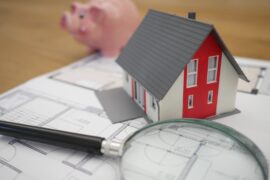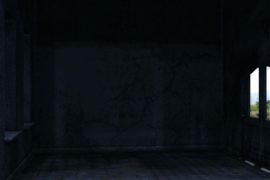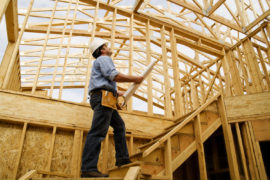It is the responsibility of both the landlord and the tenant to maintain a habitable dwelling, but when there is a breakdown in communication, problems can brew and quickly escalate.
At the end of the day, rental property owners, real estate professionals, Bornstein Law and our property management arm, Bay Property Group, are in the same business. It boils down to managing relationships. Some are more difficult to manage than others.
After being inserted into thousands of problematic landlord-tenant relationships, the underlying cause in a staggering number of these cases is a lack of communication in many forms. Inspections of the rental property, or lack thereof, can serve as a perfect nest for this insidious miscommunication.
Often, the condition of the property is not brought into the light of day, and the culpability can rest with the landlord, tenant, or both parties who share the dual responsibility to create and maintain a “healthy home,” the term embraced by rental inspection programs.
Let’s talk about potential gaffes in the communication around inspections, starting with the tenant who has a responsibility to report maintenance issues.
Tenants can put shade on the property
Not uncommonly, tenants obstruct access to the rental property to conceal what is going on inside, and this becomes a cat and mouse game with the landlord. Whether it is because of nefarious activity, damage to the dwelling, or substandard conditions, we have seen tenants go to great lengths to keep their abode away from prying eyes.
Indeed, so adamant are some tenants in denying access to the unit, we have observed some who refuse to let in exterminators to remediate a bed bug infestation. Read our article on this subject
With the limited stock of affordable housing, we also see tenants who don’t want to initiate inspections or subsequent repairs for fear they will be displaced – they don’t want to stir up any dust.
Still other tenants are who we would call “silent tenants” who are too busy to engage with the landlord and, despite numerous notices, do not allow contractors access to their unit to make repairs.
See our article on the psychological profiles of tenants
Concerns of illegal immigrants
Tenants who do not have legal immigration status can be especially prone to burrow into the unit quietly and hesitate to report maintenance issues because they do not want to draw attention, a perceived threat that has been made all the more real by recent ICE raids. Rental housing providers should be aware that immigration status cannot be used as leverage against residents, a topic we took on in our article on what the immigration debate means for rental housing providers.
The cloth cuts both ways, so we pivot to the landlord’s role in ascertaining the condition of the building.
We have said in many venues, such as policing your rental units to identify unauthorized short-term rental activity, that owners or their agents should be the eyes and ears of their property. Although on-site inspections are usually conducted annually, an ironclad lease can stipulate to only two inspections in a year.
Of course, the landlord can get a glimpse into the condition of their property by making necessary or agreed repairs, decorations, alterations or improvements, assuming the tenant has not put up roadblocks as discussed above.
We hasten to say that in many rent-controlled jurisdictions, a failure to give the landlord proper access to inspect or repair the unit constitutes a “just cause” for eviction.
Some landlords avail themselves of Health and Safety Code Section 13113.7 and 13260 to repair, test, and/or maintain smoke or carbon monoxide detectors, but we urge caution when using vehicles such as this, because the excessive “dropping in” can interfere with the tenant’s right to quiet enjoyment and create hard feelings between the landlord and tenant, something we punctuated in our earlier article. We would also be remiss to say that, barring an emergency, landlords must give proper notice to enter the unit regardless of the reasoning to enter.
Real-life consequences
In a perfect world, rental property owners or managers would routinely inspect their properties, tenants would take good care of their units, alert the landlord/manager to any maintenance issues, and allow access to make repairs. Yet, it is not a perfect world we live in and there are plenty of opportunities for failures in inspecting or reporting.
These errors have reared its ugly head in many forms. An overwhelming number of blight complaints, health risks attendant to older housing stock, and recent infernos have forced cities to take a hard look at measures to ensure the livability of tenants by creating proactive inspection programs that identify potential hazards early on.
Of course, the tragic Ghost Ship fire in Oakland is seared into memory and has served as an impetus to these programs, as well as lead poisoning and other risks that threaten the most vulnerable populations, concerns articulated in this moving video by the Healthy Homes Department of Alameda County.
Many of these initiatives have a component of “self-certification,” the process by which landlords religiously make inspections, but are subject to random, proactive audits by the city.
Parting thoughts
Substandard conditions are not acceptable, but now is not the time for finger-pointing. Bornstein Law has always operated on the presumption there are good landlords and bad landlords and in like fashion, good tenants and bad tenants. Yet, we maintain that the vast majority of rental property owners are studious landlords who take good care of their properties and tenants, and so they should not be shouldered with an inordinate amount of blame.
Many problems can be avoided by being tethered to a law firm specializing in managing landlord-tenant relationships and, much like the spirit of proactive rental inspection programs, solve problems before they are enlarged.
If you found this article informative, continue the conversation by following us on Facebook.





